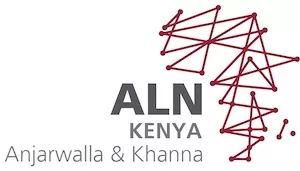Introduction
The East African Community (EAC) is a regional economic bloc encompassing six partner states namely Burundi, Kenya, Rwanda, South Sudan, Tanzania and Uganda (the Partner States).
On 1 July 2020, the Partner States celebrated 10 years of the EAC Common Market Protocol which guarantees free movement of goods, labour, services and capital within the EAC. However, limited public awareness about the EAC and its organs has hindered full exploitation of opportunities that the EAC presents.
One such organ is the East African Court of Justice (EACJ) which is established under the Treaty for the Establishment of The East African Community (the Treaty) as the judicial arm of the EAC.
Under the Treaty, the EACJ is mandated to ensure the adherence to the law in the interpretation and application of and compliance with the provisions of the Treaty by Partner States. The EACJ provides an important avenue for EAC residents, whether individuals or businesses, to challenge any actions, laws, regulations and decisions of EAC Partner States or institutions of the EAC which contravene the Treaty.
The EACJ comprises of two divisions namely the First Instance Division and the Appellate Division. The First Instance Division is the first port of call which hears all references and applications lodged before it. Thereafter, the Appellate Division may hear appeals from any judgment or order of the First Instance Division.
Jurisdiction
Broadly, the EACJ has the jurisdiction to handle suits instituted by a natural or legal person resident in the EAC against any decisions or laws passed by EAC Partner States or EAC Organs which contravene the Treaty.
The EACJ can also sit as an arbitration panel in commercial disputes. The Treaty authorises the EACJ to hear contractual disputes arising from an arbitration clause agreed upon by residents of EAC Partner States where the parties designate the EACJ as the arbitration panel in their commercial contracts or other arbitration agreements.
In addition to the aforementioned general jurisdiction, the Treaty also specifically allows the following persons/institutions to lodge disputes at the EACJ:
- Any EAC Partner State may institute a suit against another EAC Partner State(s) or EAC Organs challenging any decisions or laws that contravene the Treaty;
- The Secretary General (SG) of the EAC may institute a suit against a Partner State(s) or EAC Organ(s) if the SG is of the view that the Partner State(s) has failed to fulfil an obligation under the Treaty or has taken an action which contravenes the provisions of the Treaty; and
- The EAC or its employees may refer disputes solely arising out of employment terms and EAC staff rules.
Practically, businesses and individuals who are aggrieved by actions, laws or decisions that are unlawful or violate the Treaty can refer a broad range of disputes to the EACJ for determination. These include: –
- legislation or decisions by Partner States that are unlawful and constitute a violation of the EAC's foundational principle of rule of law;
- legislation or decisions of Partner States aimed at inhibiting free movement of goods, persons, labour, services, capital, information and technology in violation of the Treaty;
- legislation or administrative measures by Partner States which directly or indirectly discriminate (or provide preferential treatment) against products of other Partner States in violation of the Treaty;
- custom disputes where legislation or decisions of Partner States introduce unlawful tariff barriers to intra-EAC trade;
- legislation or decisions by Partner States which violate the EAC's founding principles of democracy, protection of human rights, gender equality and freedom of expression;
- legislation or decisions by Partner States which are not the subject of public participation and consultations contrary to the EAC's foundational principles of transparency, accountability and people centred cooperation.
Important timelines
All references to the EACJ must be strictly filed within 2 months from the date of the enactment, publication, directive, decision or action complained of. Based on our past experience with matters at the EACJ, the 2-month period is taken to mean 60 calendar days.
If the date is not provided, then time starts running from the date you became aware of the issue in dispute.
Should you wish to refer a dispute to the EACJ, it is critical that you reach out to us immediately to avoid being locked out by the strict 2-month timeline.
Once a reference is lodged at the EACJ, the Respondent is required to file their response to the reference within 45 days and a similar 45 day period is provided to the Applicant to file a reply to any additional issues (including a counter-claim) raised by the Respondent.
Right of appeal
The Treaty grants a party aggrieved with the decision of the First Instance decision, the right to appeal the decision to the Appellate Division. It is important to note however, that appeals to the Appellate Division are limited to the following grounds:
- points of law;
- grounds of lack of jurisdiction; or
- procedural irregularities.
Conclusion
The wide jurisdiction conferred to the EACJ in the Treaty allows the EACJ to handle disputes most of which are currently being referred to local courts - which face major challenges of delayed justice as a result of huge backlog of cases. It is definitely an alternative forum which residents of EAC Partner States can explore with respect to their disputes.
The content of this article is intended to provide a general guide to the subject matter. Specialist advice should be sought about your specific circumstances.





